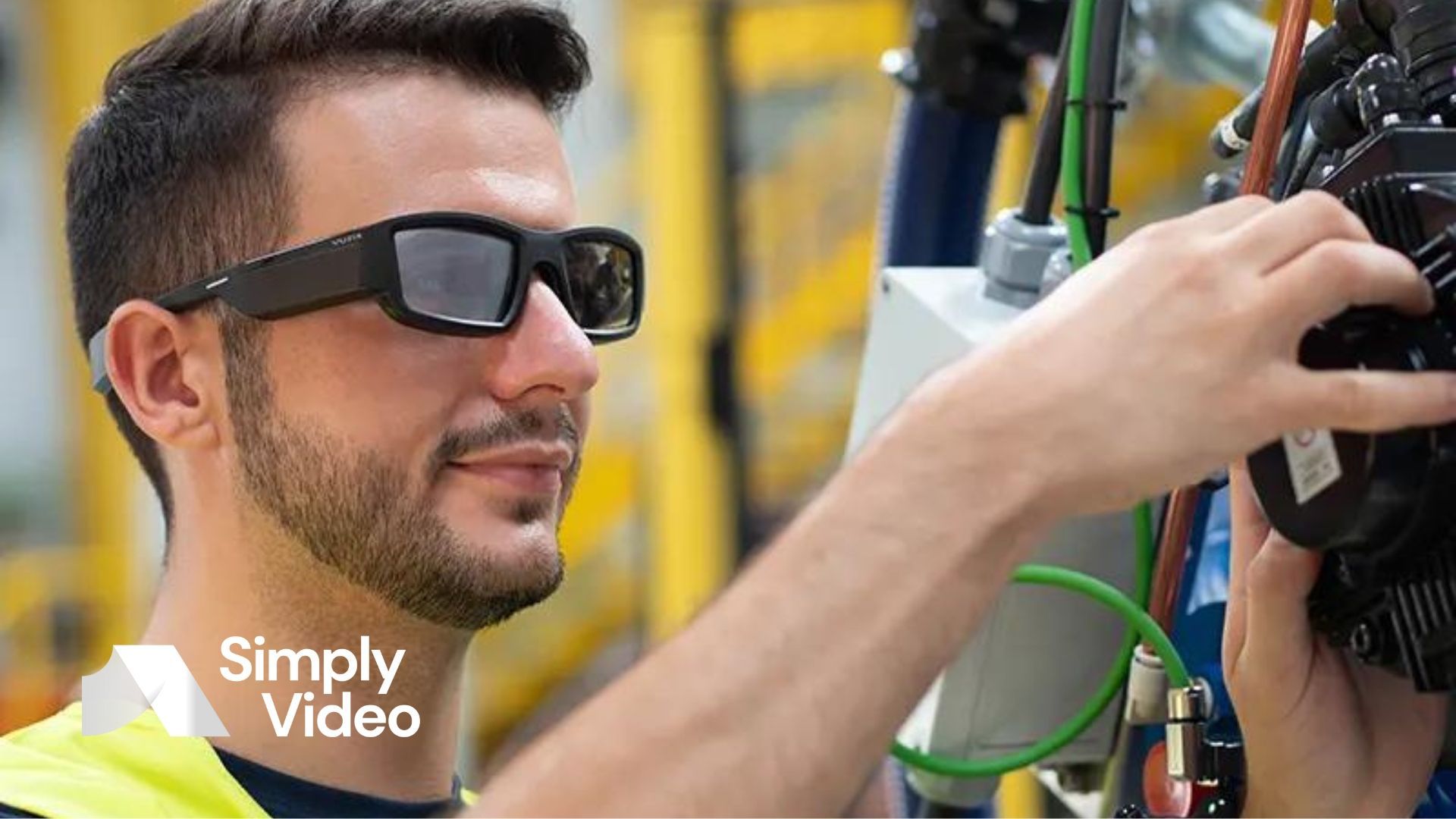Unity vs Unreal: which engine is best for extended reality (XR)?
Unity and Unreal are titans of entertainment and industry. But which engine takes the XR development crown? Find out in our point-by-point comparison.

You don't have to be a dyed-in-the-wool developer to know Unreal and Unity.
If you've ever sunk five minutes into a mobile game, you've probably seen the Unity splash screen pop up a few times. The same goes for the Unreal logo – especially if you're a fan of triple-A console games.
They're the twin titans of game development. Between them, Unreal and Unity boast a whopping
76% market share. It's little wonder they're household names.
But we're not here to crush candy or splinter cells. We're here to learn which of these eminent engines is best suited for extended reality (XR) development.
Is Unity an augmented reality (AR) powerhouse? Does Unreal lead the way for virtual reality (VR) development? Let's find out – starting with the basics.
What is XR? And how do Unreal and Unity fit in?
If you haven't heard of XR, you've certainly heard of its constituent technologies. XR is an umbrella term for any tech that alters our perception of reality – including augmented reality and virtual reality.
AR and VR (especially
VR) have fast become famous for their ability to create impressive and immersive game worlds. But both technologies have applications beyond gaming.
VR, for instance, is widely used to create realistic industrial training simulations. AR, meanwhile, is ideal for holographic meetings, preoperative analyses and a whole host of other use cases that involve interacting with 3D objects in real space.
XR is the future of gaming and enterprise – and Unreal and Unity know it.
Take it from Tim Sweeney, CEO of Unreal developer Epic Games. He
believes that "augmented reality will be the biggest technological revolution in our lifetimes".
It's hardly surprising, then, that both Unreal and Unity have worked hard to court XR developers.
Unity covers the basics (and more) with AR Foundation: a cross-platform framework with features like device tracking, plane tracking and raycasting. And for serious devs, there's Unity MARS: a set of specialised tools that aim to streamline and simplify AR development cycles.
Unreal, for its part, has the not-so-excitingly-named "Unreal Engine AR framework", which focuses on iOS and Android platforms – though the engine also supports ARKit, ARCore, Magic Leap and HoloLens.
Both platforms support VR development too. However, due to the simpler nature of the technology (relatively speaking), there are fewer frameworks and tools available to help devs get to grips with VR.
With all that said, which is the better choice for XR development?
Let's crank these engines and put them to the test.
Unity vs Unreal for XR development
Unity overview
Of the two engines, Unity is more popular for AR and VR development. According to
one writer on Medium, the platform "powers more than 60% of all [AR and VR] content".
Unity has historically been popular with mobile developers – so we wouldn't be surprised if much of this market share was made up of smartphone apps.

That doesn't mean that Unity is good for phones and bad for everything else. However, it does have something of a reputation as the favoured engine for app-store shovelware.
This is less a weakness of Unity and more a reflection of its MO.
Unity's developers prioritise accessibility and interoperability. The engine has long been free to use (at least in its most basic form) and it supports more than 19 platforms, right out of the box.
The engine is relatively user-friendly, too. It natively supports C#, which – as programming languages go – is basically Esperanto.
So it's simple to grasp and it's free to use. If that means more shovelware, who cares? Under the bonnet is a powerful 2D/3D engine with excellent XR support, a bountiful asset store and a mature developer community.
Unreal overview
If Unity is supermarket cheddar, Unreal is Roquefort.
It's less popular and it's harder to love – but serious developers swear by it.
Case in point: Unreal powers some of the most graphically impressive triple-A games on the market, including Gears 5, Borderlands 3 and Final Fantasy VII Remake.
But it's not just a game development tool. Unreal is also the engine behind industry XR projects, such as Air Canada's
lifelike VR marketing showcase and C4X's
molecular visualisation tool.
If you know what you're doing, it's easier to get impressive results with Unreal.
But knowing what you're doing is key. Compared to Unity, Unreal's learning curve is about as steep as the Matterhorn.

Unity relies on the cuddly, beginner-friendly C# programming language. Unreal, on the other hand, uses the notoriously prickly C++ – and an Unreal-specific implementation at that.
That said, Unreal – like Unity – serves up a native scripting system that makes it a little easier for non-programmers to harness its potential.
Finally, a note on interoperability. With Unity, deploying your app to another XR platform is about as simple as saying "Build". Unreal supports fewer platforms and requires more platform-specific know-how to get the job done.
Unity and Unreal's XR functionality compared
1. XR platform integrations
Unity supports at least eight XR platforms. This includes big names like Oculus VR and Steam VR, as well as lesser-known contenders such as the Pico SDK. It also supports two open APIs: OpenXR and WebXR.
Unreal supports all the same platforms except WebXR, so Unity wins this round by a hair.
Winner: Unity (just).
2. XR physics engines
Unity and Unreal both support VR Template (from OpenXR) and PhysX for physics-based interactions. However, Unreal is readying a new and improved physics solver called Chaos Physics that will eventually replace PhysX.
You can also use third-party physics plugins from Unity and Unreal's app stores. Unity currently has more third-party plugins available.
Winner: tie – Unity has more options but Unreal's beta engine promises great things.
3. XR inverse kinematics (IK) features
Unreal wins the day on this one. It supports a wide range of IK interactions natively, including two-bone IK, full-body IK and various types of chains.
Unity's native IK features are good – but they don't quite satisfy the breadth of use cases offered by Unreal.
Winner: Unreal.
4. Graphics performance
Contrary to popular belief, Unity is just as capable of producing immersive, realistic graphics as Unreal. However, you should expect to work harder to achieve the same result. Unreal offers quick pipelines for animation, shader scripting and other graphics features, making it simpler to get great results out of the box.

However, there's a trade-off: the learning curve. Unity disables many high-level features by default, so it may be easier for novice programmers to make its systems play nice.
Winner: Unreal – if you're a pro.
5. XR documentation and support
Unity is known for providing excellent support. The engine has worked hard to create comprehensive, user-friendly documentation and has a large and active developer community.
Unreal, by contrast, has a smaller support network and its documentation tends to be more fragmented. The answer you're looking for is probably out there – but you'll have to work harder to find it.
Winner: Unity.
6. Asset repositories
How times have changed. With Unity and Unreal's asset stores, you no longer have to be (or hire) a top-class 3D artist to deliver professional-looking in-app assets. You can simply buy an asset off the shelf and tweak it a little – if necessary.
For this comparison, we can simply look at the numbers. At the time of writing, Unreal's Marketplace offers around 21,000 3D assets – less than half of the Unity Asset Store's stonking 49,854.
Quality, of course, may vary.
Winner: Unity.
So, which is better for XR development?
If you go by our comparison alone, the answer is clear. Unity won three rounds outright, while Unreal took the crown on two rounds.
Easy. Unity wins. Now we can all go home.
However, as is so often the case, the real answer is several shades more nuanced.
Which is
really
the best engine for your XR project? That depends on your development experience, your target platform, whether you want gobsmacking graphics and a whole heap of other factors.
If you're developing a mobile XR app, choose Unity. If you're new to developing, choose Unity. If you don't care about triple-A graphics and just want an easy life, choose Unity.
If, however, you're a pro developer and you want to fine-tune every last detail of your XR project, choose Unreal. The same goes if you want to achieve immersive, realistic graphics – Unreal will get you to your goal faster than Unity.
If you're still not sure, flip a coin. Both engines are popular for a reason – they make XR app development hundreds of times simpler, faster and more accessible. And once you've got to grips with the basics, it should be smooth sailing.
Are you a Unity developer? We've got news for you. At SimplyVideo, we're preparing the release of an SDK that will make it easy to integrate videoconferencing features into Unity AR projects. Learn more about our
video collaboration platform – or bookmark our
XR blog to hear the latest updates.












